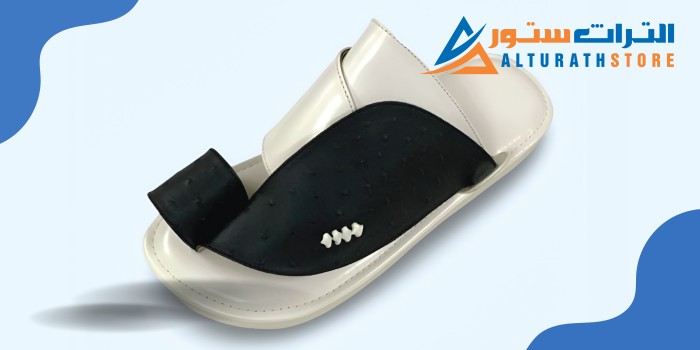Are you dreaming of designing custom shoes? To bring your ideas to life, it’s essential to understand the process and materials involved in shoemaking. The materials used not only define a shoe’s appearance but also its durability and performance. Learning how to specify the right materials is a crucial step for anyone aspiring to become a shoe designer. From luxurious leathers to innovative synthetics, the possibilities are endless. By carefully selecting the materials for your footwear, you can create designs that are both unique and long-lasting.
Let’s explore the process of choosing the best recycled material shoes and the skills needed to craft stunning, high-quality shoes.
The Materials Behind Your Shoes
The materials used in shoe construction significantly affect comfort, durability, and overall performance. Below are the most common materials used in crafting men’s formal shoes and their unique properties.
Leather
Leather is a timeless favorite in shoemaking, valued for its natural breathability, flexibility, and durability. It’s suitable for both casual and formal footwear.
- Full-Grain Leather: The most durable and premium option, maintaining its natural texture and look.
- Top-Grain Leather: Slightly less durable but still offers excellent quality.
- Genuine Leather: More affordable but not as high-quality as full-grain or top-grain leather.
Patent Leather
Patent leather combines the benefits of traditional leather with a glossy, easy-to-clean finish. Its resistance to moisture and dirt makes it a low-maintenance yet stylish choice material shoes .
Synthetic Materials
Synthetic materials are popular for their affordability, versatility, and performance benefits.
- Thermoplastic Polyurethane (TPU) and Polyurethane (PU) are widely used for their water resistance, durability, and flexibility.
- Commonly found in athletic and outdoor shoes, they provide excellent support and cushioning, even in harsh environments.
Suede
Suede is a luxurious yet delicate material, perfect for adding a sophisticated touch to any outfit. While it requires more care and is prone to staining, regular cleaning and waterproofing can extend its lifespan.
Fabrics
Fabrics like canvas, mesh, and knit materials are lightweight and breathable, ideal for casual and athletic shoes.
- Canvas: Lightweight and perfect for warm weather.
- Mesh: Keeps feet cool during physical activities.
- Knit: Flexible and snug, conforming to the shape of the foot for ultimate comfort material shoes .
Satin
Satin shoes are elegant and ideal for special occasions. However, their delicate nature makes them prone to rips and stains. Professional cleaning and careful maintenance are essential for preserving satin footwear.
10 Key Skills for Crafting Quality Leather Shoes
Crafting high-quality leather shoes requires a combination of skill, precision, and creativity. Below are the essential steps and skills needed:
1. Choosing the Right Leather
Selecting premium leather is crucial. Full-grain leather is often the best choice for its durability and timeless appearance. Consider texture, thickness, and flexibility to achieve your desired design.
2. Designing the Shoe
A clear design plan is essential. Sketch or use design tools to visualize your shoe, considering style, functionality, and comfort. Proper planning ensures a seamless production process.
3. Creating Patterns
Turn your design into precise patterns using durable materials like cardboard. These templates guide the accurate cutting of leather pieces.
4. Cutting the Leather
Carefully cut the leather pieces based on the patterns. Sharp tools and steady hands are critical to achieving clean cuts without compromising quality.
5. Skiving the Edges
Thin the edges of the leather to make stitching easier and achieve a polished look. This step is essential for a refined finish.
6. Assembling the Upper
Stitch the leather pieces together to form the upper part of the shoe. While sewing machines offer speed, hand stitching adds a unique, artisanal touch.
7. Attaching the Lining
The lining provides stability and comfort. Use soft materials like leather or fabric and ensure a secure fit by carefully stitching it to the upper.
8. Lasting the Shoe
Shape the shoe by stretching the upper over the last (a foot-shaped mold). This step ensures a snug fit and defines the shoe’s final form.
9. Fastening the Sole
Attach the sole to the upper using adhesives or stitching. Choose a material that complements the shoe’s purpose, such as leather for elegance or rubber for grip and durability.
10. Finishing Touches and Quality Control
Add the final details, clean the leather, and inspect the shoe for defects. A thorough quality check ensures the product meets the highest standards.
Master the Craft with Alturathstore
Becoming an expert in shoemaking takes dedication, precision, and creativity. You can create stunning, durable shoes that showcase exceptional craftsmanship by mastering the above steps. At Alturathstore.com, we provide extensive materials to help you bring your ideas to life. Whether you’re a seasoned shoemaker or just starting, we’re here to support your journey. Contact us today to turn your designs into reality!

